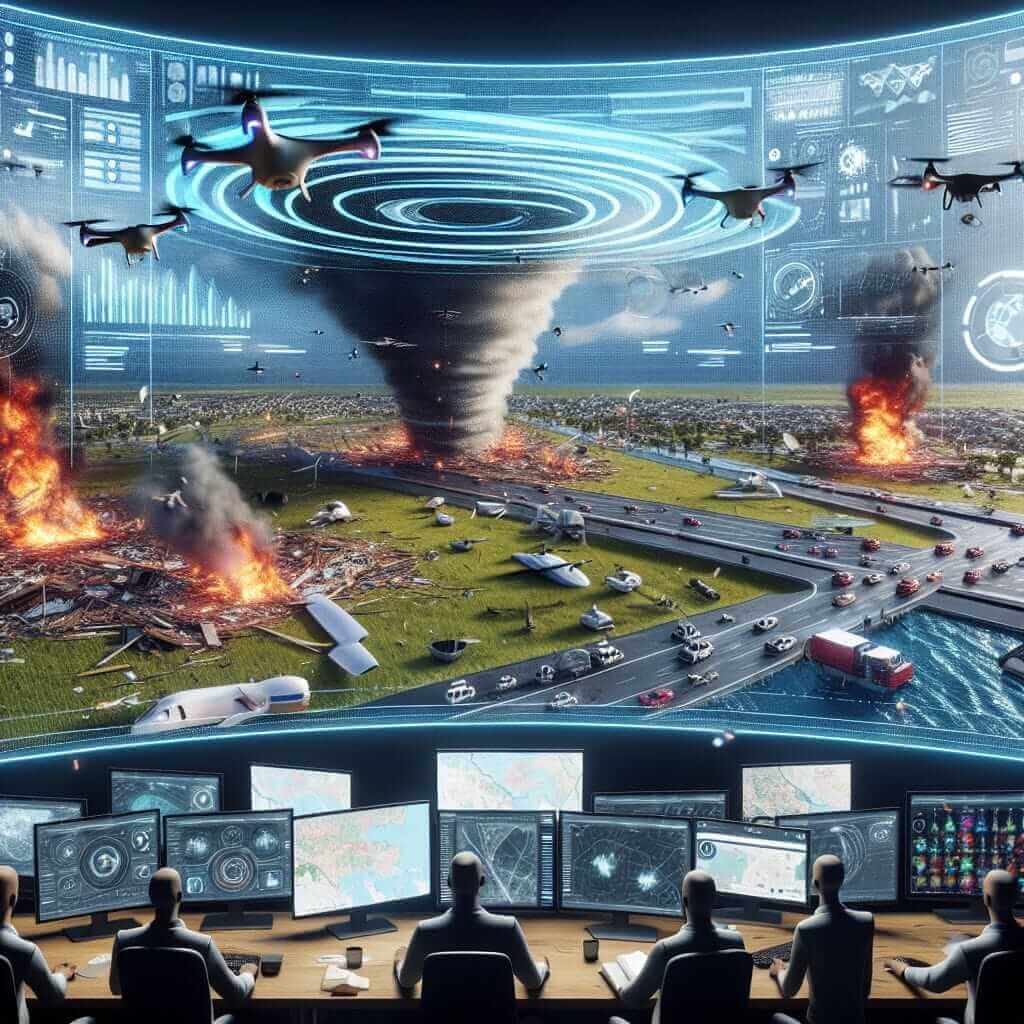The IELTS Reading test is essential for assessing your ability to comprehend and interpret texts. With the ever-evolving nature of current events, it’s not uncommon for topics related to technology and disaster management to appear in the exam. One such topic is the role of Artificial Intelligence (AI) in disaster management. Given its relevance and increasing importance, there’s a good chance you might encounter a similar theme in your IELTS exam.
Let’s dive into a comprehensive practice reading text and questions revolving around “How is AI being used in disaster management?”
Reading Passage and Questions
Practice Reading Passage
Title: The Role of Artificial Intelligence in Disaster Management
Artificial Intelligence (AI) has significantly revolutionized many fields, including disaster management. By utilizing data-driven algorithms and real-time analysis, AI offers transformative capabilities that traditional methods lack. This article explores how AI is being used to predict, manage, and mitigate the impact of natural and man-made disasters.
One crucial application of AI in disaster management is prediction. Machine learning algorithms analyze vast amounts of environmental data to predict natural disasters such as hurricanes, earthquakes, and floods with greater accuracy. For example, AI systems can compile data from various sensors, satellites, and weather stations to forecast extreme weather events, providing early warnings that save lives and resources.
Another vital function of AI is in disaster response. During crises, rapid and accurate decisions are essential. AI-powered drones and robots can assess damage in real-time, identifying the most affected areas and recommending optimal evacuation routes. Furthermore, AI systems can analyze social media and other forms of big data to estimate the impact of disasters and coordinate the allocation of resources more efficiently.
In the aftermath of a disaster, AI aids in recovery efforts by streamlining operations and optimizing resource management. AI-driven analytics help organizations prioritize which infrastructures need immediate attention, ensuring a quicker recovery. Machine learning models can also predict secondary disasters, such as aftershocks following an earthquake, allowing for better preparedness and risk mitigation.
Despite these advancements, there are challenges to AI implementation in disaster management. Data privacy concerns, algorithmic bias, and the need for substantial computational power are significant hurdles that need addressing. Nevertheless, the potential benefits far outweigh the drawbacks, making AI an indispensable tool for modern disaster management.
Practice Questions
Multiple Choice Questions
-
What is one primary use of AI in disaster management mentioned in the passage?
A. Creating policies for government agencies
B. Predicting natural disasters
C. Building infrastructures
D. Providing healthcare services -
How do AI systems help during the response phase of a disaster?
A. By setting up evacuation shelters
B. By analyzing social media data
C. By creating disaster relief funds
D. By writing disaster response manuals
Identifying Information (True/False/Not Given)
-
Predicting secondary disasters is one application of AI in disaster management.
- True
- False
- Not Given
-
The passage states that AI can completely replace human operatives during disaster responses.
- True
- False
- Not Given
Matching Information
-
Match the following AI application areas with their related benefits:
- Prediction: __
- Response: __
- Recovery: __
a) Optimizing resource management
b) Analyzing environmental data
c) Recommending evacuation routes
Sentence Completion
-
AI algorithms can analyze data from sensors, satellites, and __ to forecast extreme weather events.
-
Challenges of implementing AI in disaster management include data privacy, algorithmic bias, and __.
Answer Keys
-
B. Predicting natural disasters
- During disasters, machine learning algorithms analyze vast amounts of environmental data to predict natural disasters.
-
B. By analyzing social media data
- AI systems can analyze social media and other forms of data to estimate the impact of disasters and coordinate resource allocation.
-
True
- The passage mentions that AI-driven analytics can help predict secondary disasters, such as aftershocks following an earthquake.
-
False
- The passage suggests that AI aids in response efforts but does not imply the complete replacement of human operatives.
-
- Prediction: b) Analyzing environmental data
- Response: c) Recommending evacuation routes
- Recovery: a) Optimizing resource management
-
weather stations
- AI algorithms can analyze data from sensors, satellites, and weather stations to forecast extreme weather events.
-
computational power
- Challenges of implementing AI include data privacy, algorithmic bias, and the need for substantial computational power.
Common Mistakes and Tips
- Inference Errors: Avoid jumping to conclusions not explicitly supported by the text. Practice distinguishing between ‘True,’ ‘False,’ and ‘Not Given’ statements.
- Vocabulary Misinterpretation: Familiarize yourself with key terms to avoid misunderstanding the context or meaning of sentences.
- Time Management: Practice under timed conditions to improve your speed and efficiency.
Vocabulary
Here are some vocabulary terms from the passage:
- Revolutionized (verb) /ˌrɛvəˈluːʃənaɪzd/: To change drastically in a significant or fundamental way.
- Mitigate (verb) /ˈmɪtɪɡeɪt/: To make something less severe, serious, or painful.
- Algorithms (noun) /ˈælɡeriðəmz/: A process or set of rules to be followed in calculations or problem-solving operations by a computer.
- Aftershocks (noun) /ˈæftərˌʃɑːks/: Smaller earthquakes following the main shock of a large earthquake.
Grammar Focus
- Relative Clauses: Used to provide essential information about a noun. E.g., “AI systems that analyze vast amounts of data can predict natural disasters.”
- Passive Voice: Often used in formal writing. E.g., “AI is being used in disaster management to predict and mitigate impacts.”
Recommendations for IELTS Reading Preparation
- Set a Schedule: Practice at least one reading passage daily.
- Diversify Topics: Include different subjects such as technology, environment, health, etc.
- Review Mistakes: Analyze your errors and understand why the correct answers are right.
- Expand Vocabulary: Learn new words and their usages through reading passages and context.
With persistent practice and a strategic approach, you’ll enhance your reading skills and be well-prepared for the IELTS Reading test.

Happy studying, and best of luck with your IELTS preparation!